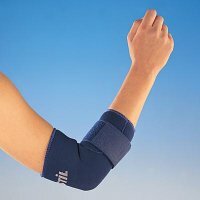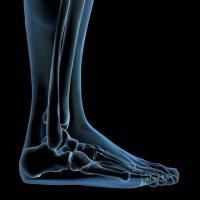Treatment of meniscal inflammation

Most often, with a knee injury, it is the meniscus in the knee joint. The treatment of such injuries is becoming a customary event for athletes, climbers and ballet dancers. To damage the meniscus usually causes excessive flexion or extension of the joint in the knee or a direct effect on the shin of a heavy object.
The treatment for a meniscus depends on how it was damaged. Meniscus can come off, crumble, rupture, acquire excessive mobility due to rupture or extension of intermenal ligaments, etc. Because of untimely diagnosis, meniscus damage can go into a chronic process. It is manifested by cystic degeneration and subsequent degeneration of the meniscus.
Symptoms of meniscal inflammation
They must be known to start the correct treatment on time. The first symptom is a sharp pain. At first it has a blurred character, covering all the knees, but in a short time the pain is localized along the joint gap in the area of injury - either from the outer or inner side of the knee. This depends on which particular meniscus( medial or lateral) is damaged.
Secondly, there is a sharp restriction of movements. It becomes easier to keep your foot bent, since extension only increases pain. Also, the joint increases in volume and there is a symptom of a click and rolling. These symptoms of inflammation of the meniscus are determined approximately in the second week of the disease.
In the long-term period, uneasy knee pain can be disturbed while descending the stairs downward, as well as the feeling of a foreign object inside the knee joint. In themselves, the symptoms of meniscal inflammation are nonspecific and can occur with many other injuries - with sprains or joint bruises. Therefore, they require a thorough examination.
Treatment of
The nature of the treatment is determined by the type of injury, the severity of the lesion and its localization. It is also important when the knee joint meniscus was injured. As a rule, treatment begins with the elimination of acute pain syndrome. It is further determined by which way it is required to treat this meniscus lesion in the knee joint.
Operative treatment
Indications for surgical intervention:
- complete detachment of the meniscus;
- crushing the meniscus;
- complex gap with offset;
- presence in the joint of a free fragment that causes jamming and inflammation;
- hemorrhage in the joint cavity( recurrent hemarthrosis).
In such cases, inflammation of the meniscus requires surgical treatment. It consists in stitching the lesion, in partial or complete removal of the inflamed meniscus. Treatment depends on the severity of the injury. In some cases it is possible to install an artificial implant.
Conservative treatment
If there is a small rupture or tearing, this trauma is treated with the help of pharmacological drugs that have a beneficial effect on the cartilaginous tissue and contribute to the early healing of the inflammation of the meniscus. Applied the following groups of drugs: chondroprotectors, analgesics and anti-inflammatory drugs, and also applicable auxiliary therapy - vitamin preparations and dietary supplements. In the acute period of inflammation, narcotic analgesics - promedol and codeine are used. The use of NSAIDs that relieve pain and fight with inflammation is also shown.
The leading drugs for meniscus damage are chondroprotectors - teraflex, glucosamine, chondroitin sulfate. These drugs can stimulate the synthesis of cartilaginous tissue, improve metabolism in connective tissue and intra-articular fluid. In addition to this group, doctors prescribe chondroprotective nutritional supplements. Additives usually contain collagen, a structural material of the knee joint meniscus cartilage. Such treatment with collagen participates quite actively in the healing of cartilage, increases its moisture retention properties and eliminates inflammation. In addition, to the meniscus of the knee joint recovered sooner, it is necessary to use vitamins A, C, E.
For the healing period of such a trauma, a plaster bandage or knee joint is applied. It usually takes two weeks to wear an orthosis. Timely diagnosis and treatment of inflammation of the affected knee joint meniscus can improve his condition and avoid serious complications.



